Understanding how to bond with a sugar glider is key to nurturing a satisfying and positive relationship with your pet. As social creatures, sugar gliders thrive on interaction and companionship, making it essential to invest time and effort into building a bond with them. In this guide, we will delve into the significance of bonding with your sugar glider and provide a comprehensive overview of the steps you can follow to foster a deep and trusting relationship.
Sugar gliders are small, nocturnal marsupials native to Australia, Indonesia, and New Guinea. They are known for their unique ability to glide through the air using a membrane of skin called a patagium. These adorable creatures are highly social and form strong bonds with their colony members in the wild. As a pet owner, you are responsible for providing the social interaction and companionship your sugar glider needs to thrive.
Creating a safe and comfortable environment is the first step in bonding with your sugar glider. Sugar gliders are sensitive to their surroundings, so it is important to provide them with a spacious cage that is equipped with the necessary amenities, such as a nesting box, exercise wheel, and branches for climbing. Additionally, you should ensure that the temperature and humidity levels in their enclosure are suitable for their well-being.
Establishing trust is crucial in building a bond with your sugar glider. Start by allowing your glider to become familiar with your scent and voice. Spend time near their cage, talking softly and offering treats to create positive associations. Gradually, you can begin to offer your hand for them to sniff and eventually allow them to climb onto your hand or arm. Being patient and letting your sugar glider set the pace for the bonding process is important.
In the next section, we will discuss socializing and interacting with your sugar glider, including the importance of playtime and the types of activities that can help strengthen your bond. Stay tuned for expert tips and techniques on how to create a positive and interactive experience with your pet sugar glider.
Understanding Sugar Gliders
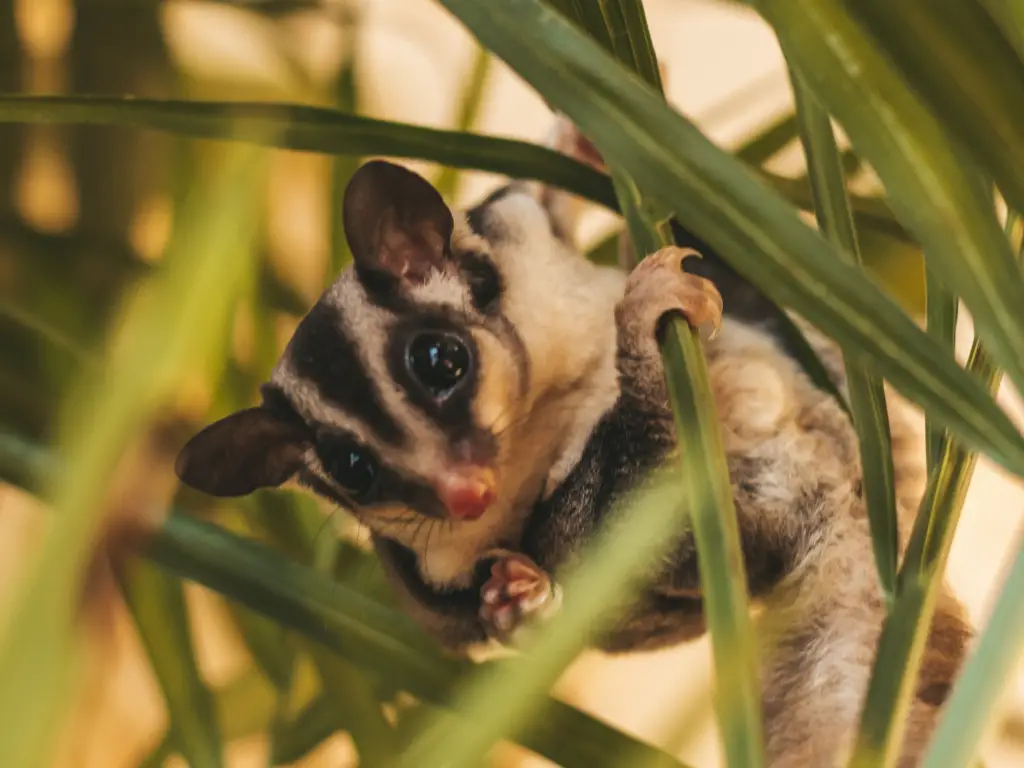
Sugar gliders are small, nocturnal marsupials native to Australia, Indonesia, and New Guinea. They are social animals that live in groups called colonies and are known for their ability to glide through the air using a membrane of skin called a patagium. Understanding sugar gliders’ natural behaviors and needs is essential for building a strong bond with them.
Firstly, it is important to note that sugar gliders are highly social animals and thrive in the company of other gliders. If you are considering getting a sugar glider as a pet, it is recommended to have at least two gliders to prevent loneliness and ensure their well-being. However, if you only have one glider, you can still bond with them by providing plenty of social interaction and stimulation.
Sugar gliders are also arboreal creatures, meaning they spend most of their time in trees. Therefore, creating a safe and comfortable environment that mimics their natural habitat is crucial. This includes providing a spacious cage with plenty of branches, perches, and hiding spots for them to explore and climb. Additionally, sugar gliders require a warm and humid environment, so maintaining the appropriate temperature and humidity levels is essential for their health and well-being.
In order to build trust and establish a bond with your sugar glider, it is important to approach them with patience and respect. Avoid making sudden movements or loud noises that may startle them. Instead, spend time talking to them calmly and soothingly near their cage. Offer them treats and rewards to associate your presence with positive experiences. It may take some time for your glider to feel comfortable around you, so be patient and allow them to approach you at their own pace.
Socializing and interacting with your sugar glider is crucial for building a strong bond. Spend time playing with them outside of their cage, allowing them to explore their surroundings under your supervision. Provide them with toys, tunnels, and interactive activities to keep them mentally stimulated. Bonding pouches can also be used to carry your glider close to your body, allowing them to feel secure and bonded with you.
Understanding sugar gliders’ natural behaviors and needs is the foundation for building a strong and trusting relationship with them. You can develop a deep bond with your pet sugar glider by creating a safe and comfortable environment, establishing trust, and providing social interaction and enrichment.
Check out this video on bonding with your Sugar Glider:
Creating a Safe and Comfortable Environment
Creating a safe and comfortable environment is crucial for bonding with your sugar glider. These small creatures are naturally curious and active, so providing them with a space that meets their needs and allows them to explore and play is important.
Firstly, you should ensure that the cage or enclosure you provide for your sugar glider is spacious enough for them to move around comfortably. A minimum cage size of 24 inches by 24 inches is recommended, but the larger, the better. The cage should also have multiple levels or platforms for climbing and jumping, as sugar gliders are arboreal animals and enjoy being up high.
In addition to a spacious cage, you should also provide plenty of toys and enrichment items for your sugar glider to interact with. This can include things like ropes, branches, tunnels, and hammocks. These items not only provide mental stimulation but also mimic their natural habitat and encourage physical activity.
Another important aspect of creating a safe environment is ensuring that the cage is escape-proof. Sugar gliders are known for their ability to squeeze through small openings, so make sure the cage bars are close enough together to prevent any escapes. Additionally, check for any gaps or holes in the cage your glider could get stuck in.
Temperature and lighting are also important factors to consider. Sugar gliders are sensitive to temperature extremes, so keeping their environment within a comfortable range of 70-90 degrees Fahrenheit is important. You should also provide a UVB light source to mimic natural sunlight, which is important for their overall health and well-being.
Lastly, it’s important to keep the cage clean and hygienic. Regularly clean out the cage, remove any waste or uneaten food, and replace bedding material as needed. This will help prevent the buildup of bacteria and odors, ensuring a healthy and pleasant environment for your sugar glider.
Creating a safe and comfortable environment for your sugar glider sets the foundation for a strong bond. When your glider feels secure, and at ease in their surroundings, they will be more likely to trust and interact with you. Remember to regularly assess and update their environment to meet their changing needs and prioritize their safety and well-being.
Establishing Trust and Building a Bond
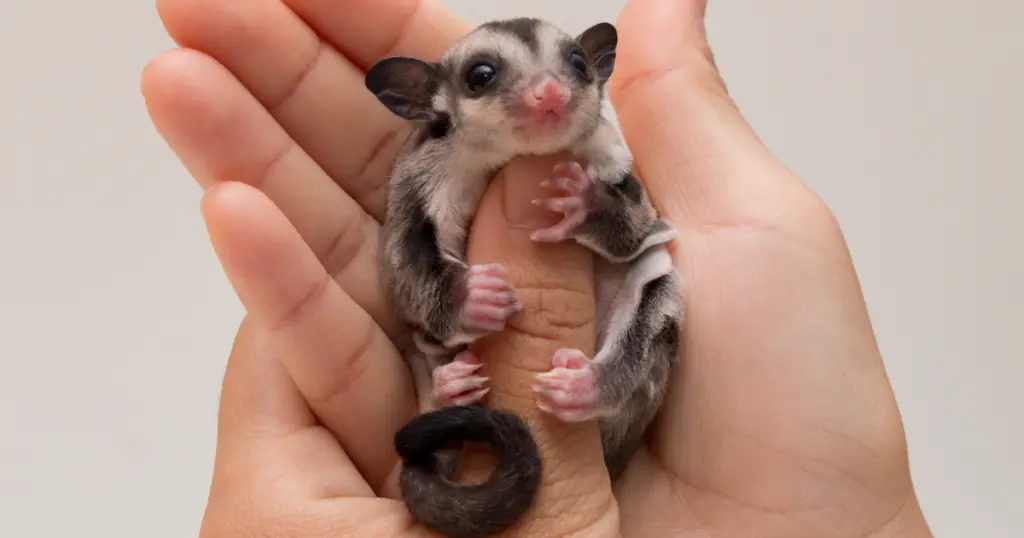
Building a strong bond with your sugar glider is essential for a happy and fulfilling relationship. Sugar gliders are social animals that thrive on companionship and interaction, so it is important to establish trust and build a bond with them. Here are some tips and techniques to help you in this process:
1. Give them time to adjust:
When you first bring your sugar glider home, giving them time to adjust to their new environment is important. Allow them to explore their cage and surroundings at their own pace without forcing any interaction. This will help them feel safe and secure in their new home.
2. Offer treats and rewards:
Sugar gliders are known to have a sweet tooth, so offering them treats can be a great way to build trust. Start by offering treats from your hand, allowing them to approach and take it at their own comfort level. This will help them associate your presence with positive experiences.
3. Spend quality time together:
Spending time with your sugar glider is crucial for building a bond. Set aside dedicated time each day to interact with them. This can include gentle petting, talking to them in a soothing voice, or simply sitting near their cage and observing their behavior. The more time you spend together, the stronger your bond will become.
4. Use positive reinforcement:
Positive reinforcement is powerful in building trust and bonding with your sugar glider. Whenever they display desired behaviors, such as coming to you or allowing you to handle them, reward them with praise, treats, or a favorite toy. This will reinforce their trust in you and encourage them to repeat those behaviors.
5. Respect their boundaries:
It is important to respect your sugar glider’s boundaries and not force any interaction. If they show signs of stress or discomfort, such as hissing, biting, or trying to escape, give them space and try again later. Pushing them beyond their comfort zone can damage the trust you have built.
Remember, building a bond with your sugar glider takes time and patience. Each glider is unique and may require different approaches. By understanding their needs, providing a safe and comfortable environment, and consistently working on building trust, you can develop a strong and loving relationship with your pet sugar glider.
Socializing and Interacting with Your Sugar Glider
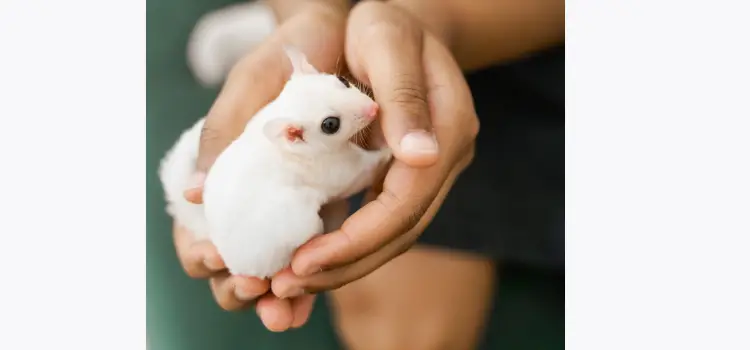
Socializing and interacting with your sugar glider is crucial for building a strong bond and creating a positive experience for both you and your pet. Here are some tips and techniques to help you effectively socialize and interact with your sugar glider:
1. Start with a calm and quiet environment:
Sugar gliders are sensitive creatures, so creating a calm and quiet environment is important when interacting with them. Avoid loud noises, sudden movements, and crowded spaces that may cause stress or anxiety for your glider.
2. Spend quality time together:
Dedicate regular time each day to spend with your sugar glider. This can include activities such as playing, cuddling, or simply sitting near each other. The more time you spend together, the stronger your bond will become.
3. Use positive reinforcement:
Sugar gliders respond well to positive reinforcement. Reward your glider with treats, praise, or gentle strokes when they exhibit desired behaviors or show signs of trust. This will help reinforce positive associations and encourage bonding.
4. Respect their boundaries:
Sugar gliders have their own unique personalities and comfort levels. It’s important to respect their boundaries and not force them into interactions they are not comfortable with. Allow your glider to approach you on their own terms and gradually build trust at their own pace.
5. Provide interactive toys and activities:
Sugar gliders are highly active and curious animals. Provide them with a variety of toys, climbing structures, and interactive activities to keep them mentally stimulated and engaged. This will not only help prevent boredom but also provide opportunities for bonding through play.
6. Offer a variety of foods:
Sugar gliders have specific dietary needs, so providing them with a balanced and nutritious diet is important. Offer a variety of fresh fruits, vegetables, protein sources, and specialized sugar glider pellets. Sharing mealtime together can be a bonding experience for both you and your glider.
7. Seek professional guidance if needed:
If you’re having difficulty bonding with your sugar glider or if you have specific concerns, don’t hesitate to seek professional guidance from a veterinarian or an experienced sugar glider owner. They can provide valuable advice and support tailored to your specific situation.
Building a bond with your sugar glider takes time, patience, and consistency. Each glider is unique, so it’s important to understand and respect their individual needs and preferences. With love, care, and positive interactions, you
Providing Proper Nutrition and Care
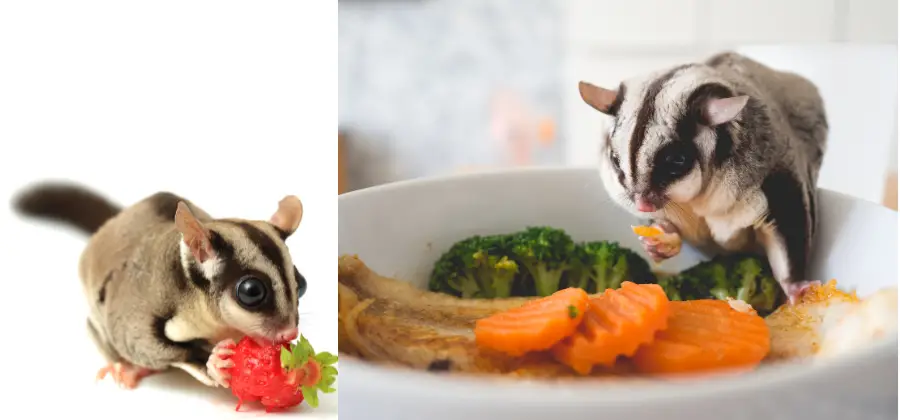
Proper nutrition and care are essential for bonding with your sugar glider. Ensuring that your glider is healthy and well-cared for creates a foundation for a strong and trusting relationship. Here are some tips on providing the right nutrition and care for your sugar glider:
1. Diet:
Sugar gliders are omnivores and require a balanced diet consisting of fruits, vegetables, protein, and a small amount of insects. It is important to provide a varied diet to meet their nutritional needs. Commercially available sugar glider pellets can also be included in their diet, but they should not be the sole source of nutrition.
2. Fresh Water:
Always provide fresh, clean water for your sugar glider. Use a water bottle with a sipper tube that is easily accessible for your glider. Change the water daily to ensure its freshness.
3. Cage Setup:
Create a comfortable and stimulating environment for your sugar glider. Provide a spacious cage with plenty of room for climbing and gliding. Include branches, ropes, and toys for them to play with. Make sure the cage is secure and escape-proof.
4. Hygiene:
Regularly clean the cage and remove any waste or uneaten food. Sugar gliders are clean animals, and a clean environment will help prevent any health issues. Also, provide a dust bath for your glider to help keep their fur clean and healthy.
5. Veterinary Care:
Schedule regular check-ups with a veterinarian who specializes in exotic pets. They can provide guidance on proper nutrition, health care, and any specific needs your sugar glider may have. Regular veterinary care is crucial for maintaining your glider’s overall health and well-being.
6. Bonding through Care:
Bonding with your sugar glider can also be achieved through daily care routines. Spend time with your glider daily, talking to them softly and offering treats. This will help them associate you with positive experiences and build trust.
Remember, each sugar glider is unique, and it may take time for them to feel comfortable and bond with you. Be patient, consistent, and gentle in your interactions. With proper nutrition and care, your sugar glider will thrive, and your bond will continue to grow stronger over time.
Training and Enrichment Activities

Training and enrichment activities are essential for bonding with your sugar glider and providing them with mental stimulation and physical exercise. These activities help strengthen the bond between you and your pet and promote their overall well-being and happiness. Here are some tips and ideas for training and enrichment activities with your sugar glider:
1. Start with basic commands:
Just like dogs, sugar gliders can be trained to respond to basic commands such as “”come, “stay,” and “”no.” Use positive reinforcement techniques such as treats and praise to reward your glider when they successfully follow a command. Be patient and consistent in your training sessions, as it may take some time for your glider to understand and respond to the commands.
2. Teach tricks:
Sugar gliders are intelligent creatures and can learn various tricks with proper training. Start with simple tricks such as spinning in a circle or standing on their hind legs. Use treats and rewards to motivate your glider to perform the tricks. Gradually increase the difficulty level of the tricks as your glider becomes more comfortable and confident.
3. Provide interactive toys:
Sugar gliders are highly active animals and need plenty of mental and physical stimulation. Provide them with a variety of interactive toys, such as puzzle feeders, climbing structures, and tunnels. These toys will keep them engaged and entertained, preventing boredom and destructive behavior.
4. Offer foraging opportunities:
Sugar gliders are natural foragers; providing them with foraging opportunities can be a great way to bond with them. Hide treats or small pieces of fruits and vegetables in their enclosure, and let them search and find the hidden treasures. This not only stimulates their natural instincts but also encourages them to trust and rely on you for their food.
5. Take them on supervised outings:
Sugar gliders can be taken on supervised outings to explore their surroundings. Use a secure bonding pouch or harness to keep them safe and prevent them from escaping. Take them to a quiet, controlled environment such as a secure backyard or glider-proofed room. Allow them to climb, explore, and interact with their surroundings under your supervision.
Remember, training and enrichment activities should always be done in a positive and gentle manner. Avoid using force or punishment, as it can damage the trust and bond you have built with your sugar glider. Be patient, consistent, and understanding; your bond with your sugar glider grows stronger over time.
Handling and Bonding Techniques
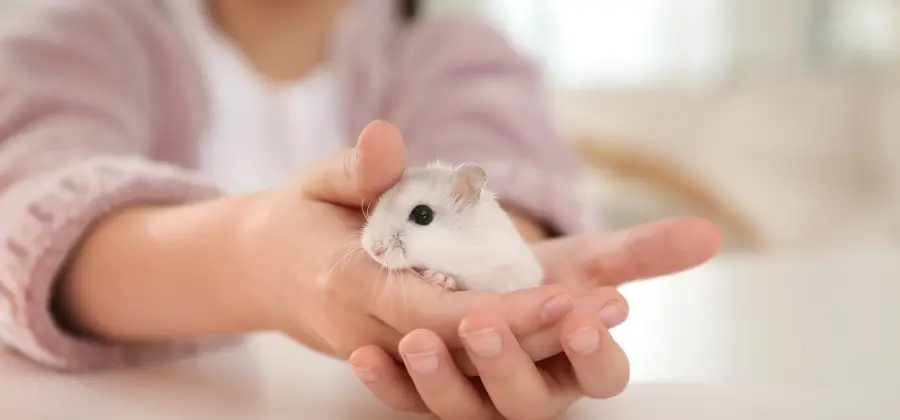
When it comes to bonding with your sugar glider, proper handling techniques are crucial. These delicate small creatures can easily become stressed or frightened if handled incorrectly. Here are some tips to help you establish a bond with your sugar glider through handling:
1. Start Slowly:
Begin by allowing your sugar glider to become familiar with your scent and presence. Place your hand near their cage and let them approach you at their own pace. Avoid making sudden movements or loud noises that may startle them.
2. Use a Bonding Pouch:
A bonding pouch is a small, soft pouch that you can wear around your neck or waist. This allows your sugar glider to feel close to you while still feeling safe and secure. Start by placing a piece of clothing with your scent in the pouch and gradually introducing your glider.
3. Offer Treats:
Sugar gliders are highly food-motivated, so using treats can be an effective way to build trust. Offer small pieces of their favorite fruits or treats from your hand, allowing them to approach and take the food at their own pace. This will help them associate your presence with positive experiences.
4. Gradually Increase Handling Time:
Once your sugar glider is comfortable with your presence, you can start gently picking them up. Use slow and gentle movements, supporting their body with both hands. Start with short handling sessions and gradually increase the duration as your glider becomes more comfortable.
5. Respect Their Boundaries:
It’s important to remember that sugar gliders are still wild animals and may not always enjoy being handled. Pay attention to their body language and cues. If they show signs of stress or discomfort, such as crabbing or biting, give them space and try again later.
6. Be Patient and Consistent:
Building a bond with your sugar glider takes time and patience. Every glider is unique and may require different approaches. Consistency is key, so make sure to spend regular, quality time with your glider to strengthen your bond.
Remember, bonding with your sugar glider is a gradual process. It’s important to respect their individual personalities and preferences. You can develop a strong and trusting relationship with your pet sugar glider by using proper handling techniques and providing a positive and interactive environment.
Patience and Consistency in the Bonding Process

Building a strong bond with a sugar glider takes time and patience. These small creatures are naturally cautious and may take some time to warm up to their owners. It is important to approach the bonding process with patience and consistency to create a trusting relationship with your pet.
One of the key aspects of bonding with a sugar glider is establishing a routine. Sugar gliders thrive on consistency, so creating a daily routine that includes regular feeding times, playtime, and bonding sessions is important. This will help your glider feel secure and comfortable in their environment.
During bonding sessions, it is important to be calm and gentle. Avoid sudden movements or loud noises that may startle your glider. Start by sitting near their enclosure and talking softly to them. You can also offer treats or small pieces of fruit to encourage them to come closer. Over time, your glider will become more comfortable with your presence and may even start to approach you on their own.
It is important to remember that every sugar glider is unique and may have different preferences when it comes to bonding. Some gliders may be more outgoing and eager to interact, while others may be more shy and reserved. It is important to respect their boundaries and not force them into any interactions they are not comfortable with. Building trust takes time, and letting your glider set the pace is important.
Consistency is key in the bonding process. Make sure to spend time with your glider every day, even if it is just sitting near their enclosure and talking to them. This will help them become familiar with your presence and build trust over time. Avoid long periods of absence, as this can disrupt the bonding process and make it more difficult to establish a strong bond.
In conclusion, bonding with a sugar glider requires patience and consistency. Establishing a routine, being calm and gentle during bonding sessions, and respecting your glider’s boundaries can create a strong and trusting relationship with your pet. Remember to be patient and let your glider set the pace, as every glider is unique and may require different approaches to bonding. You can develop a deep and meaningful bond with your sugar glider with time and effort.
Why is it important to bond with my sugar glider?
Sugar gliders are highly social animals that thrive on companionship and interaction. Building a strong bond with your sugar glider is essential for creating a positive and fulfilling relationship with your pet.
How can I create a safe and comfortable environment for my sugar glider?
Provide a spacious cage equipped with amenities like a nesting box, exercise wheel, and branches for climbing. Ensure that the temperature and humidity levels in their enclosure are suitable for their well-being.
How can I establish trust with my sugar glider?
Start by allowing your glider to become familiar with your scent and voice. Spend time near their cage, talking softly and offering treats to create positive associations. Gradually, you can begin to offer your hand for them to sniff and eventually climb onto.
What are some ways to socialize and interact with my sugar glider?
Playtime is important for your sugar glider. Activities that can help strengthen your bond include playing with toys, exploring new environments together, and spending time in a bonding pouch.
How can I train my sugar glider?
Using positive reinforcement techniques, sugar gliders can be trained to respond to basic commands. Start with simple commands and gradually increase the complexity as your glider becomes more comfortable.
What should I consider when handling my sugar glider?
Always use slow and gentle movements when handling your sugar glider. Start with short handling sessions and gradually increase the duration as your glider becomes more comfortable.
What should I do if my sugar glider is not bonding with me?
Each sugar glider is unique and may require different amounts of time to develop a strong bond. Be patient, consistent, and respect your glider’s boundaries and comfort levels. If you’re having difficulty bonding with your sugar glider, consider seeking professional guidance from a veterinarian or an experienced sugar glider owner.
Conclusion
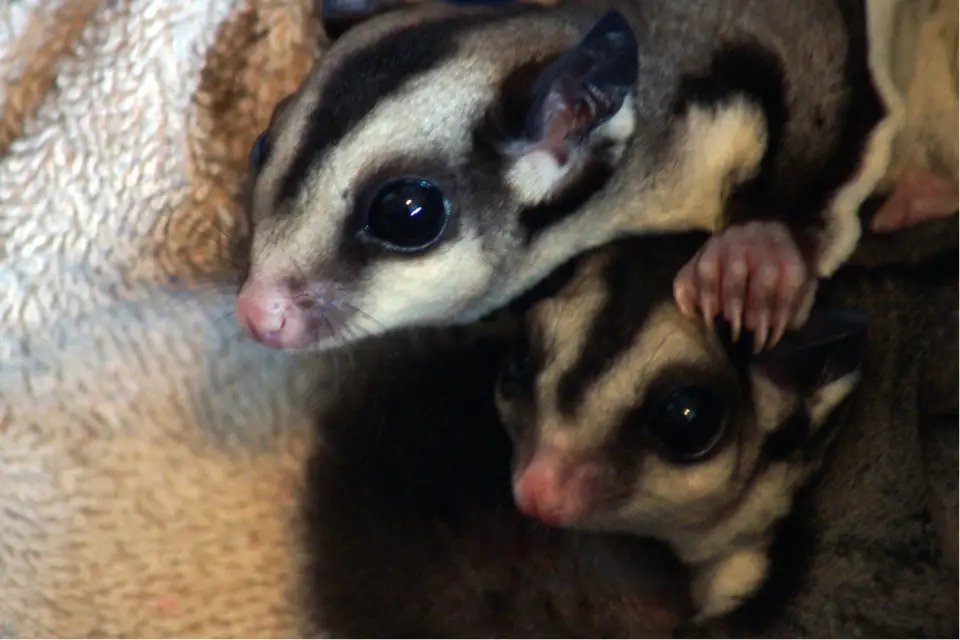
In conclusion, bonding with a sugar glider requires time, patience, and consistency. It is important to understand their natural behaviors and create a safe and comfortable environment for them to thrive in. Establishing trust and building a strong bond can create a positive and interactive experience with your pet sugar glider.
Throughout the bonding process, it is crucial to socialize and interact with your sugar glider regularly. This can include playing with them, providing them with toys and enrichment activities, and allowing them to explore their surroundings. Engaging in these activities strengthens your bond and creates a sense of companionship with your glider.
Proper nutrition and care are also essential in bonding with your sugar glider. Providing a balanced diet that includes fresh fruits, vegetables, and high-quality pellet food is crucial for their overall health and well-being. Additionally, ensuring they have a clean and comfortable living space, regular veterinary check-ups, and proper grooming will contribute to a strong bond between you and your glider.
Training and enrichment activities can further enhance your bond with your sugar glider. Teaching them simple commands and tricks can be a fun and rewarding experience for both of you. Additionally, providing them with mental and physical stimulation opportunities, such as puzzle toys and climbing structures, can help strengthen your bond and keep them mentally stimulated.
Handling and bonding techniques should be approached with care and patience. It is important to gradually allow your sugar glider to become comfortable with your presence and touch. Start by offering treats and allowing them to approach you on their terms. As they become more comfortable, you can gradually introduce handling and bonding techniques, such as gentle petting and holding.
Lastly, it is important to remember that bonding with a sugar glider takes time. Each glider is unique and may require different amounts of time to develop a strong bond. Patience and consistency are key in the bonding process, and respecting your glider’s boundaries and comfort levels is important.
In conclusion, following these tips and techniques can build a strong and trusting relationship with your pet sugar glider. With time and patience, you can create a bond that will bring joy and companionship to both you and your glider for years to come.”
